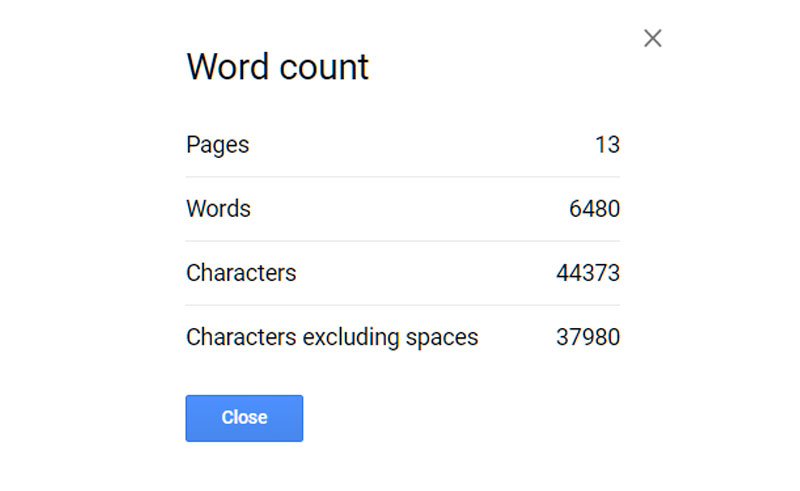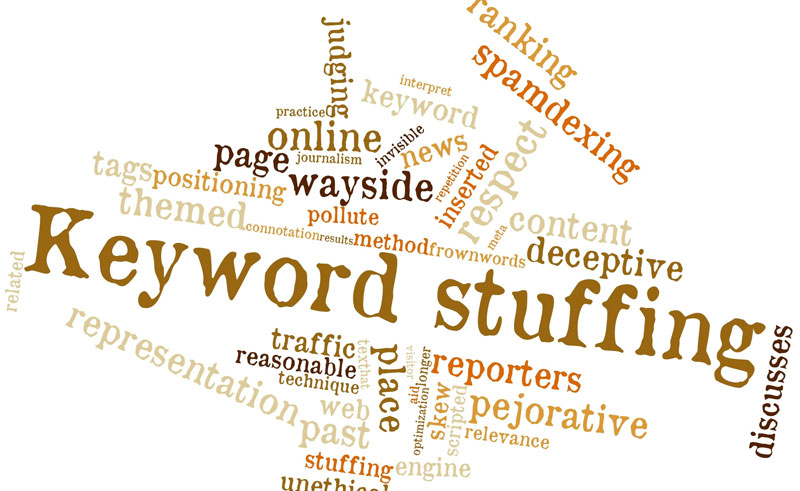The world wide web has democratized the writing of content, especially due to short byte entertaining video content being the chosen form of expression. Even then, the written content is still a realm that is open to the chosen few who are willing to write copious copies for people and search engines. It’s easy to imagine why content writing tips in 2020 are of paramount importance. It is a learned art to be able to write over a thousand words on a topic and manage to keep the readers hooked until the end.
Even though formats of content consumption are evolving, certain content continues to need the evergreen processing format. If you are a beginner in the world of content writing, we’ve put together some content writing tips for beginners below that can help you navigate in this journey. If you find the tools listed to be useful, don’t forget to bookmark this page for reference.
We would like to start by saying that it’s an exciting time to be a content marketer. What seems like spending hours typing furiously is actually all about aiding product/service discovery, draw attention, subtly sell and push the ROI for the business. It’s a mighty important job right there so let’s get started with the basics of content writing.
What is Content Writing?
One common mistake that new content writers make is that they miss the essence of content writing. Content writing isn’t about showing off your eloquence with flowery prose. While novelists paint intricate worlds and journalists uncover truths, content writers have a distinct mission: to inform, entertain, or persuade.
Content writers focus on serving the readers’ needs in clear, concise, and relatable terms. They’re subject matter experts. Whether it’s tech, travel, or knitting, they dive deep into your niche, becoming the go-to person for insights. So, are you intrigued by content writing? You must be thinking now, “What’s it like in the trenches?”
Well, in the early days, you’ll likely stumble around. A lot. Content writing for beginners is often plagued by the feeling of giving into imposter syndrome or throwing in the towel.
But those stumbles are your ladder to success. Every blank screen, every typo, every awkward sentence, they’re your teachers. With each word typed, you inch closer to mastery. As you forge ahead, writing great content becomes a habit. That blinking cursor becomes a companion, and you learn to tame it. You realize that writing goes beyond just about words. It encompasses experiences.
You master the art of turning your readers’ pains into pleasures. Your articles become solutions to problems, sources of inspiration, or moments of pure insight for your audience.
How to Become a Content Writer
So, you’ve decided to dip your toes into the world of content writing. But how do you get started? Let’s break it down.
Qualification Requirements
First, let’s talk about qualifications. Do you need a Ph.D. in Writing? Nope, but qualifications do matter in any field.
Content writing requires extensive skills and experience, not fancy degrees. Basic writing skills and a passion for words are your main ingredients.
Experience is King. Oftentimes, experience trumps qualifications. The more you write, the better you become. Clients often pay more for experienced writers who can deliver top-notch content.
Steps to Becoming a Content Writer
Ready to dive into the nitty-gritty of how to become a content writer? Here’s your roadmap:
– Choose a niche
Picking a niche can be tricky sometimes. But don’t worry, there’s latitude of choice here.
You can focus on a handful of niches. Choose niches that strike a balance between your passion and what’s popular. That way, you won’t end up grappling with content writing topics that bore you, and people won’t find your topics boring either.
– Create a portfolio
Your portfolio is your golden ticket. Set up a dedicated space to showcase your best work – you’ll find tons of free platforms and templates to help simplify the process.
– Assemble pitch templates
Think of these as your elevator pitch. Craft templates to approach potential clients efficiently.
Elements that make a pitch stand out include your qualifications in relation to the job requirements and past experiences that prove your capabilities.
– Join writing platforms
Armed with a portfolio showcasing your work and some niche expertise, it’s time to go hunting for your first gigs. Websites such as Upwork and Freelancer are a great place to start, with tons of job openings available at any given time.
– Explore social media
Social media isn’t just for cat memes. It’s a place to connect with clients, showcase your expertise, and find opportunities.
Set up a professional-looking profile on LinkedIn and Facebook. Participate in relevant groups and communities – especially those of writers and publishers.
– Apply on job boards
Content writing sites for beginners like job boards and content mills can be your springboard. You might have some luck with them. Who knows, you could stumble on a job out there that’s a perfect fit for you.
– Collect social proof
Once you’ve bagged a few of those hard-fought gigs, the rest should come easier. Use social proof of your work – testimonials, engagement metrics, etc., to galvanize your effort and elevate your chances of getting hired.
Types of Content Writing
Now, content writing isn’t a one-size-fits-all affair. It’s a diverse world with various niches. Let’s run through the most important types of content writing, each with its own flavor and style.
1. Blog writing
Blogs are the heartbeat of the internet. As a blog writer, you’re the storyteller, the educator, the entertainer, all in one.
Blog posts are informative and engaging, and oftentimes a distinctive voice that shines through.
2. Long-form content writing
If blogs are short chats, long-form content is heart-to-heart with your audience. You dive deep into topics. You take readers on a journey, exploring every nook and cranny and providing readers with comprehensive insights.
3. Copywriting
Copywriters craft persuasive content. Their content goes beyond just informing or recommending. They inspire action and draw commitment.
As a copywriter, you write compelling copy for ads, websites, newsletters, emails, and other marketing materials.
4. Social media writing
Ever wondered who comes up with those witty tweets and catchy Instagram captions? That’s the social media writer.
In the era of tweets and posts, social media writers rule. They capture attention in a blink and keep it. They’re the ringmasters of a digital circus.
5. Product descriptions
Think you can write a kick-ass product description that makes readers want to click the ‘buy’ button? You could make the cut as a product description writer.
It requires showcasing a product’s best side and how it helps solve the audience’s pain points.
6. Whitepapers
Whitepapers are like academic papers, but more accessible. They delve deep into a topic, with no-frills, zero-fluff language. They break down complex topics, often in B2B niches, into easily digestible niches.
7. Scriptwriting
Scriptwriters create the dialogue and scenes for marketing videos, podcasts, and other multimedia. They bring stories to life, pulling the strings of characters and concepts to project a narrative.
8. Press releases
When companies have big news to share, they turn to press release writers. But you can also be called upon for other announcements besides big events.
9. E-books
This is long-form content in a bookish format. E-books are often used for in-depth guides and lead generation.
Top Content Writing Skills for Successful Content
Now, let’s further explore content writing for beginners. In this section, we’ll introduce you to the essential skills needed to go from an ordinary writer into a content maestro.
Ability to offer value
In the world of content writing, your words should never be empty vessels drifting aimlessly in the vast sea of information. You must be a lighthouse, guiding readers to safe harbors of knowledge and insight.
A content writer needs to have a sixth sense of what the audience needs and satisfy those needs with an incredible reading experience.
Diligent research
Research skills are fundamental to your ability to offer value as a content writer. Whether it’s an in-depth report or a catchy blog post, researching is the foundation upon which to build valuable content.
You need to pour over tons of credible sources, cross-reference information, and fact-check like a detective on a case.
Your diligence will shine through in the authenticity of your content.
Crisp and on-point writing
Online attention spans resemble firecrackers – short-lived and easily distracted. Crisp and pointed content hits the bullseye.
Can you convey your message in fewer words? If yes, do it! Your content should be lean, mean, and information-packed.
High-level organizational thinking
A content writer is a strategic player in the organization’s game plan. They’re the bridge between the company’s dreams and the audience’s reality.
Deft editing skills
Editing isn’t just about fixing typos; it’s about perfecting a masterpiece. Your first draft is like a rough sculpture. It’s the editing process that shapes it into a perfect work of art.
Every word you chisel and every sentence you tweak brings your true message closer to the reader’s heart.
Writing different content styles
Content writing is a diverse landscape, and you must be a versatile explorer.
You’re not just a one-trick pony; you’re a whole circus. Writing blogs, crafting compelling marketing content, or even diving into the world of scriptwriting – it’s all in a day’s work.
Each terrain requires a different set of skills. You must learn how to adapt to different blog ideas for beginners and adjust your writing style and tone to the content’s purpose.
Problem-solving and analytical skills
As a content writer, you’re solving a mystery with every piece you create. Who’s the audience? What do they want? How can you give it to them?
It’s like cracking a case wide open. Your analytical skills are your magnifying glass, revealing the hidden clues.
Investigate topics thoroughly. Ask questions, dissect information, and piece together the puzzle.
Time management
Time is your most precious resource as a content writer. The clock is always ticking, and deadlines loom.
Set deadlines, prioritize tasks, and stick to a schedule.
Effective Content Writing Challenges to Master the Art
So, you’re ready to embark on your content writing journey. But how do you sharpen those writing skills and become a wordsmith extraordinaire? Let’s explore some challenges that will transform you from a novice into a content-writing virtuoso.
The freewriting frenzy
Ever felt the pressure of the blinking cursor? The freewriting challenge is your antidote. Set a timer for 10-15 minutes, and write like a river in spate. No pausing, no editing—just let the words flow.
This exercise improves your flow and creativity. Surprisingly, some of your best ideas emerge when you let your thoughts run wild.
Stylistic shape-shifting
Now, take a topic you know well and write about it in different voices. Go formal, then casual, even humorous.
This exercise is essential for diversifying your writing abilities. Different styles resonate with different readers, and you want to reach them all.
The content resurrection challenge
Remember that old blog post gathering digital dust in the archives? It’s time to breathe new life into it. Take the content and give it a fresh, engaging makeover. Revise, restructure, and rekindle the spark.
With this exercise, you learn the art of content improvement, a skill every content writer should have.
The word limit wrestle
Now and then, you’ll be faced with the challenge of conveying a message within a tight word limit.
Can you distill your thoughts and insights into a concise, impactful piece? It’s a skill that sets you apart in the world of content.
Guest bloggers boot camp
Next, step into someone else’s shoes. Write guest posts for different blogs.
This exercise broadens your horizons and helps you adapt to diverse writing requirements. Plus, it’s an excellent networking opportunity in the content writing community.
The A/B headline showdown
Headlines are the first impression of your content. This exercise hones your headline-writing skills, a crucial aspect of content creation.
Write multiple headlines for the same piece of content. Test which one grabs the reader’s attention better.
The editing gym
Take a poorly written piece—maybe even one of your own—and transform it. Edit for clarity, conciseness, and overall impact.
This exercise highlights the intricacies of the editing process and the journey to content perfection.
Tips for Content Writing Success
Write before you read

Detailed research is the foundation of good content. Most topics you’ll receive will have something published about them already. If you take industries like travel, the most common topics like things to do and places to visit have several listicles published already. Gathering information comprehensively about data that is already available is important to identify the gaps and find your niche to make your write up different.
Find your differentiator
If there are 100 articles about planning a Goa holiday and you have been given the task to come up with a write-up, how are you going to make it different from all the ones that are already there? What are the characteristics of the articles ranking in the 1st, 2nd and 3rd position on Google? They already possibly have 2000 words or more about the topic, which is extensive!
Here’s where your research will come handy to understand your niche and unique selling proposition for your write up. If you take the Goa example, you’ll find travel guides and first-person accounts on holidaying in Goa. If you want a topical differentiator, you can write a Goa 2020 travel guide which is likely to rank on this query. Old content, new flavor!
Also Read: Content Writing 101: How to Become a Successful Content Writer
Master The Headline Hook
Ever heard the saying, “You never get a second chance to make a first impression”? Here’s one of the most important content writing tips for beginners: Your headline is your first impression, the make-or-break moment.
It needs to promise value, intrigue, or a solution to a problem, and then deliver it. Make it clear, strong, and enticing.
Leverage visual delights
Whether it’s images, infographics, or videos, visuals break the monotony of text and enhance understanding.
They add flavor and depth to your content, making it more appealing. Visuals are also invaluable for explaining complex concepts in a digestible way.
Get introduced to your new best friend Grammarly

All the content writing tips in this blog, this is the one you should definitely pay attention to.
This line is taken from the New York Times copy edit quiz – can you figure what is wrong here?
After receiving his doctorate at Princeton, the university hired him as an assistant professor and promoted him to full professor in 1965.
Did you spot it? The introductory modifying phrase is a so-called dangler. In precise usage, “receiving” should apply to the noun (or pronoun) immediately following the modifying phrase. But here it doesn’t — the university did not receive a doctorate. One simple fix is to make the initial phrase a separate clause with its own subject “After he received …”
It’s not the easiest thing to spot the errors, especially if you must self-edit the copy too. Help is around with Grammarly. The free Chrome extension is an absolute lifesaver for emails. The paid version is a must-have if you write content every day. The article scores also help in ensuring you are improving over time.
Also Read: Grammar Cheat Sheet: Rules to Help You Write Well
Find more ‘friends’ who will help you along the way

There are a whole bunch of tools out there that can come handy depending on what you are writing.
Dictionary.com: For all the words that you need to look up quickly
Follow Merriam-Webster on Twitter: Add on to your vocabulary with new words every day.
Flesch Kincaid Reading Ease score: This tool not only helps fix your active and passive voice but also ensures you have not gone overboard on the language and made your article difficult to read. (That is one long sentence that the tool will ask you to break into smaller sentences!)
Yoast SEO: Though you may not know SEO extensively, this tool can help you learn along the way.
Also Read: A tried-and-tested guide to becoming a better content writer
Building structure and matching word counts

As a writer, you are likely to be given word counts. Most writers tend to get paid by the number of words so this becomes an important metric. The same article can be written in 1000 words or 2000 depending on how much more content you add. You can have 9 amazing things to do in Thailand or 32 offbeat activities in Thailand.
Based on the word count, start chunking content and creating sub-topics. Research realistically how much content you can add under each sub-topic and adjust them. Voila! You have a structure ready!
Also Read: Discover the Top 5 Secrets to Successful Content Creation
Stay in the fluff-free zone
Readers are here for substance, not filler. Avoid fluff and repetition like the plague. Every word should earn its place in your content.
Don’t waste your readers’ time with convoluted prose. Your readers should easily follow your content’s path without getting lost in a jungle of words.
Be clear and concise. Say what you mean, and mean what you say.
Also, remember, online readers skim before they dive in. Long-winded sentences and paragraphs are like roadblocks on their journey through your content.
Keep it short, punchy, and engaging. Your readers will thank you for respecting their time and attention.
Know why the big intro matters

The only reason why someone will spend 9 minutes reading your article is if they get interested in the first 30 seconds. The article intro and the first sub-topic needs to create enough intrigue for the reader to keep going until the end.
Take the article Why Women Seldom Succeed. With a title like that, you are already approaching to read the article with contradictory points hitting you before you read. The opening paragraph, interestingly talks about why men fail, which again piques interest in the topic.
Writing for mobile-first – Chunk your content

Most websites have over 70% visitors coming on their mobile site. With the common vertical scrolling behavior, it is important to chunk content into readable paragraphs for good visual experience.
The big Why of content marketing: SEO

We started out by saying that your content will be contributing to ROI. One of the key measurement metrics will be via search engine optimization. Content written on blogs is responsible to rank high and generate incremental traffic to the website.
Along with blog or article content writing, you may also be roped into SEO friendly content writing like titles and meta content like meta description. Try some quick reads on this and it can be a great skill set to have.
Also Read: 5 Content Marketing Trends in 2020
Difference between writing and keyword stuffing

If you see a content writer fuming after reading a brief, it is most likely because they have been asked to use a particular phrase 15 times in an article. Having keywords is important but stuffing them without context can cause more harm.
While you may have to use the keyword a few times, try to use similar phases so that you can cover more ground with the language.
Using powerful CTAs

What do you want the reader to do after he reads your article? What do you want him to do first and later? What do want them to do mid-way if they are dropping off?
Having Call To Action interspersed through the article allows you to cover more ground while ensuring that your reader has an opportunity to take action at all times.
From a tech perspective, floating buttons or timed notifications can also do the trick. But ensure this is there as a part of your content too.
Hyperlinking your content

Hyperlinks are among the important metrics that Google uses to judge the usefulness of an article. Links to external sites helps Google understand the factual references in the article. Links to the site’s own pages help with interlinking. Use at least 2 of each in your articles as a best practice.
Do a fact check – all through the way

Some facts can be wishy-washy. If you are taking about Safari’s in India, you would mention the last Tiger count available online. What if this source was a general blog and not the actual tiger census data. It will not only tarnish the trust in your article and website but also have you responding to users who are eager to point out mistakes.
Even if you don’t publish all of them, it is very important to have a ready link reference to all your sources to ensure you can pull them out if required.
Sleepover it – self-edit after a day

After furiously typing for an hour and a half and writing 700 words, you will be too close to the article to catch errors. Grammarly and other edit tools will help but it is highly likely that you will get a better idea to say the same thing when you edit after a gap of a few hours. You will see that of all the tips for content writing for beginners, this one is going to be the one that you will continue practicing even after you are a pro.
It is a best practice to finish writing and then sleep over it and edit only the next day if you plan to self-edit. Even if you have an editor to do this, always self-edit once before you hit the Send button.
Different strokes: Email v/s website content v/s blogs

Content is written differently for different media depending on the attention span people are likely to have for that medium. I may spend 3 minutes reading a blog but I won’t spend more than 20 seconds on a promotional emailer. Similarly, the average time a user may spend on a site is a minute or two. If you are writing for emails, the subject line becomes the 5 most important words for all the effort spent in designing and writing the email. For a blog, the visual content holds as much importance as the text content. A how-to video on the website can do what 1000 words can.
Write. Test. Analyze. Repeat

So what happened after you wrote the 2500 word blog? When did it begin to rank? Did it generate traffic? How about leads and conversions? What was the open and click rate for the email? Did the time spent on site increase after you revised the website content?
Knowing what metrics to measure is a key step in improving your content. Measuring it, analyzing trends and implementing learnings is the data-driven approach to content marketing that is a must for every content writer. Marketers often forget to share these statistics or simply find it cumbersome to track. Make sure you ask the metric questions from time to time so that your learning curve continues to get better.
Take the quiz
All set for fun times?
Try out this popular copy edit quiz by the New York Times. Interested in making a career as a content writer?
Never stop learning
To stay at the top of your game, keep honing your skills. Consider each piece you write as another step toward becoming a better content writer. The more you write, the better you get.
Stay updated with the latest industry trends, SEO best practices, and shifts in your niche. What worked yesterday may not work tomorrow. Attend workshops, read industry blogs, and embrace new techniques. Be adaptable and open to change. This constant evolution keeps your content fresh and relevant.
Think you have what it takes to write content that can improve ROI?
Check out the opportunities at Justwords.





